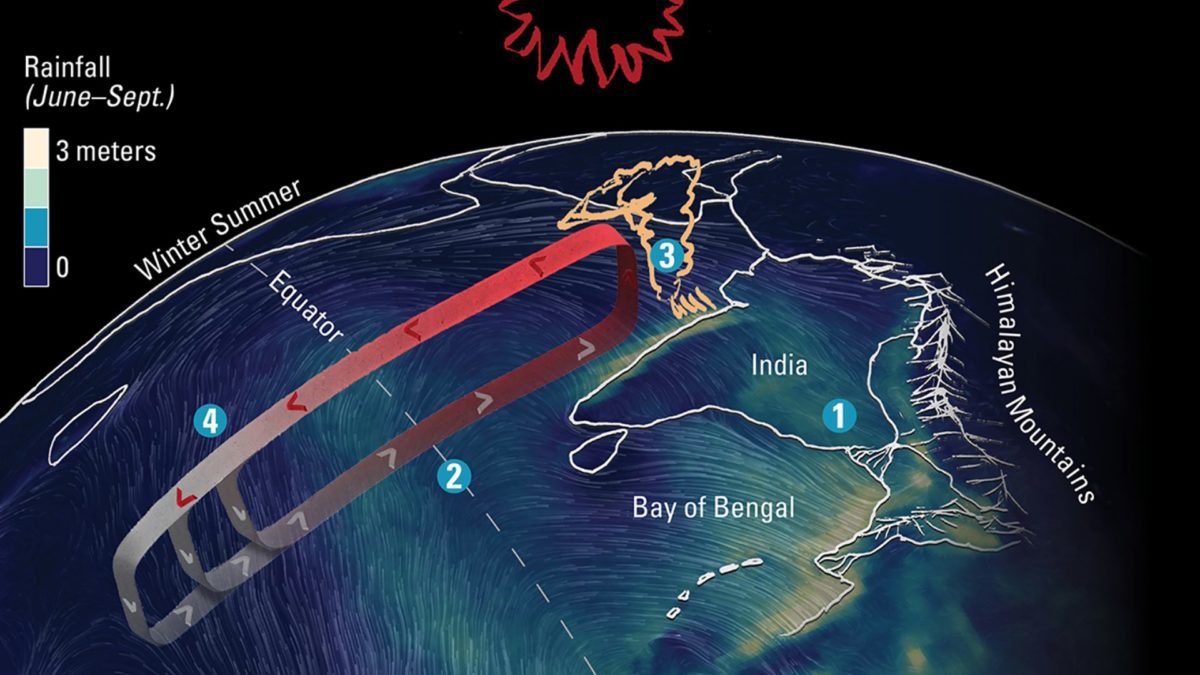Monsoon circulation cycle
Used in Oceanus magazine, Vol. 53, No. 2, pg. 40.
Image Of the Day caption:
WHOI scientists are working in the Indian Ocean to gain new insights into forecasting monsoons, the seasonal, heavy rain storms that billions of people on the Indian subcontinent depend upon to irrigate their crops. This illustration shows how widespread rainfall over land (#1) is just one piece in the monsoon circulation, essentially a mammoth loop over the equator. Winds play a critical role (#2), picking up moisture and energy from the prominent source of all the rainwater: the ocean. As these humid winds rise (#3), the moisture condenses into clouds that generate heavy rain, releasing latent heat into the dried-out air. As the rising air expands and heads back out to sea, it lowers the surface pressure, accelerating the entire monsoon circulation (#4), bringing more rain.
Oceanus online caption:
1. During summer, land and ocean surfaces absorb solar heat, which warms the atmosphere above them. Hot air expands and rises above the continent.
2. With the Himalayan Mountains blocking air from the north, moisture-laden air over the Indian Ocean rushes in to fill the low pressure created by the rising hot air. The winds north of the equator (white streaks) are deflected eastward by Earths rotation.
3. These monsoon winds bring heavy rain over land. As the humid air rises, the moisture condenses into clouds that generate rain, releasing heat. As the rainfall dumps moisture, the extra heat punches clouds higher and further accelerates winds.
4. The dried-out air levels off and heads back out to sea. It eventually cools and sinks toward the ocean to complete the cycle. The monsoon circulation transfers energy (red) from the hemisphere in summer to the cooler hemisphere in winter. (Illustration by Gualtiero Spiro Jaeger, © Woods Hole Oceanographic Institution)
Image and Visual Licensing
WHOI copyright digital assets (stills and video) contained on this website can be licensed for non-commercial use upon request and approval. Please contact WHOI Digital Assets at images@whoi.edu or (508) 289-2647.

